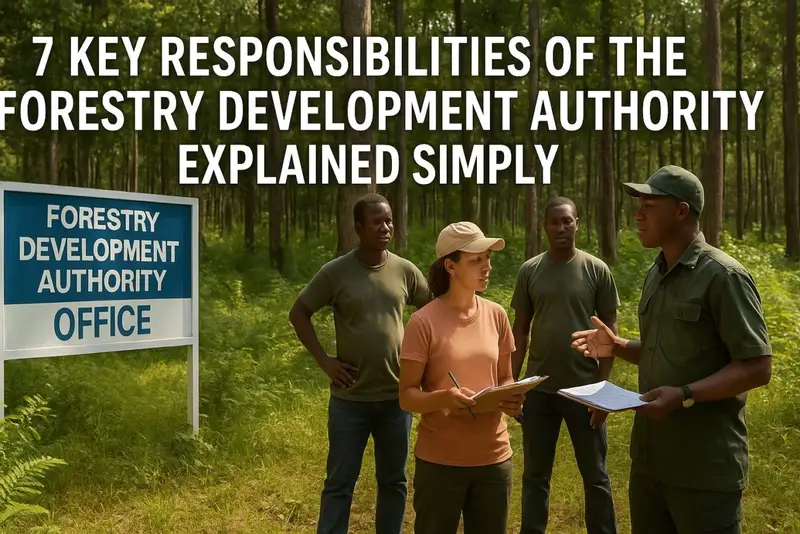The Forestry Development Authority (FDA) plays a key role in the sustainable management, conservation, and development of forests in many countries—especially in regions where forests are critical to the environment, economy, and local communities. This guide explains what the Forestry Development Authority is, why it matters, and how it works, using plain language and reliable information to help readers understand its purpose and impact.
What Is The Forestry Development Authority?
The Forestry Development Authority is a government agency responsible for managing and protecting forest resources. It typically oversees everything from forest conservation and biodiversity to timber licensing, environmental monitoring, and community forest programs. The exact structure and responsibilities may vary by country, but the core mission is always to ensure that forests are used wisely and remain healthy for future generations.
In many nations, the FDA operates under the Ministry of Agriculture or the Ministry of Environment. A well-known example is Liberia’s Forestry Development Authority, established in 1976, which manages over 40% of the country’s land covered in forests.
Key Responsibilities Of The Forestry Development Authority
Forest Management And Planning
The FDA develops national forest policies and long-term plans. These plans guide how forests are used, how much wood can be harvested, and where conservation zones should be established.
Environmental Protection
Forests are home to many endangered species and serve as vital carbon sinks. The FDA ensures that ecosystems are protected by preventing illegal logging, promoting reforestation, and enforcing environmental regulations.
Licensing And Regulation
Timber companies and other forest users must obtain licenses to operate legally. The FDA sets conditions for these licenses, monitors compliance, and imposes penalties for violations.
Community Engagement
Many forest communities depend on forests for fuelwood, food, and income. The FDA often works with local groups to promote community-based forest management. This gives people a stake in protecting forest resources while meeting their livelihood needs.
Research And Education
The Forestry Development Authority supports research on forestry practices, biodiversity, climate change, and land use. It may also run awareness campaigns or work with schools and NGOs to educate the public about forest conservation.
Why The Forestry Development Authority Matters
Forests are essential for life. They regulate the climate, protect watersheds, support agriculture, and provide raw materials and jobs. Without responsible oversight, deforestation, illegal logging, and habitat destruction can have long-lasting impacts.
The FDA ensures that:
- Forests are managed based on science and sustainability
- Natural resources are not overexploited
- Biodiversity is preserved
- Local communities are involved in forest governance
- Forest laws are followed and enforced
Challenges The FDA Often Faces
Like many environmental agencies, the FDA operates in a complex landscape. It must balance conservation with economic development, enforce laws in remote areas, and deal with limited budgets and staff. Other challenges include:
- Illegal logging and corruption
- Conflicting land use policies
- Climate change and natural disasters
- Community conflicts over land rights
- Poor data or outdated forest inventories
Despite these hurdles, strong leadership, international cooperation, and modern technologies (such as satellite monitoring and mobile data collection) help the FDA make progress.
The Role Of International Support
Many Forestry Development Authorities work with global partners such as the World Bank, UN Food and Agriculture Organization (FAO), and non-governmental organizations. These partnerships provide technical expertise, funding, and tools to support sustainable forest management. Projects may include:
- Forest mapping and inventory systems
- Training programs for forest rangers
- Legal reform and anti-corruption measures
- Carbon credit programs (e.g., REDD+)
- Agroforestry and land restoration initiatives
Forestry Development Authority: Examples In Action
Liberia
Liberia’s FDA is one of the most recognized in West Africa. It manages vast tropical rainforests and collaborates with international bodies to combat illegal logging and promote transparency in the timber trade.
Ghana
Ghana’s Forestry Commission includes an FDA-like agency that manages forest reserves and supports eco-tourism and community forestry.
Philippines
The Department of Environment and Natural Resources has a Forestry Management Bureau that plays a similar role, focusing on reforestation and forest land use planning.
How The FDA Impacts Everyday Life
Whether you live near a forest or in a city, the FDA’s work affects you:
- Clean water flows from healthy forested watersheds
- Forests absorb CO₂, helping reduce climate change
- Timber used in construction or furniture comes from regulated forests
- Medicinal plants, fruits, and nuts often come from forest ecosystems
By promoting wise forest use, the FDA protects vital natural systems that support life.
Final Thoughts
The Forestry Development Authority is more than just a government office—it’s a key player in protecting the planet’s forests. Its work touches environmental protection, economic development, community well-being, and global sustainability goals.
As the world faces increasing environmental challenges, the role of the FDA and similar agencies becomes even more critical. Supporting their efforts—whether through responsible consumer choices, awareness, or community participation—helps ensure forests continue to thrive for generations to come.
Hungry for more? Head over to my website for fresh articles.
